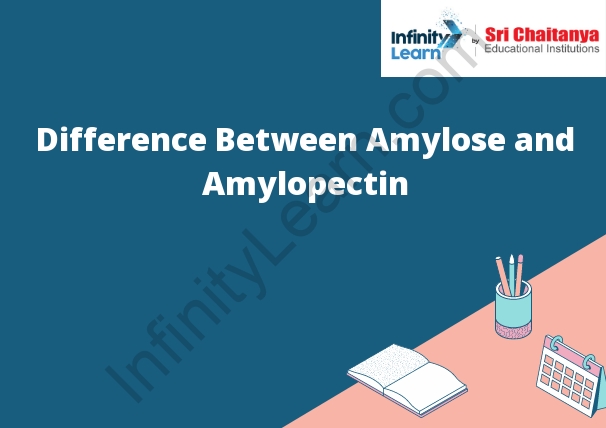Table of Contents
Difference Between Amylose and Amylopectin
Difference Between Amylose and Amylopectin:Amylose and amylopectin are both types of starch, which are long chains of glucose molecules. However, they are different in a few ways.
Amylose is a straight chain of glucose molecules, while amylopectin is a branched chain. This means that amylopectin is more likely to form clusters, while amylose is not.
Amylose is also more soluble in water than amylopectin. This means that it can dissolve in water more easily.
Amylose is also less digestible than amylopectin. This means that it is broken down into glucose molecules more slowly.

Foods Rich in Amylopectin
Some foods that are high in amylopectin include:
- Potatoes
- Corn
- Pasta
- Rice
- Bread
Importance of Amylopectin
Amylopectin is a type of starch that is found in plants. It is a water-soluble molecule that is made up of long chains of glucose molecules. Amylopectin is important because it is a source of energy for plants and it also helps to store glucose in the plant.
Structure of Amylopectin
Amylopectin is a type of starch that is found in plants. It is a large, branched molecule that is made up of many smaller units called glucose molecules. These glucose molecules are linked together in a chain, and each chain is surrounded by a protective coating of protein.
Amylose
is a polysaccharide made up of glucose units linked together by a-1,4-glycosidic bonds. It is a straight-chain molecule that is insoluble in water.
Amylose is found in plants and is a component of starch. It is a straight-chain molecule that is insoluble in water. The glucose units are linked together by a-1,4-glycosidic bonds.
Amylose and Iodine Bounding
Amylose is a type of starch that is composed of long, unbranched chains of glucose molecules. Iodine is a chemical element that has a purple-black color and is used in various medical tests. When iodine is added to a solution containing amylose, it will bind to the glucose molecules in the starch, causing the solution to turn a deep purple color.
Uses of Amylose
- Amylose is a type of starch that is made up of long chains of glucose molecules. It is a soluble starch, which means that it dissolves in water.
- Amylose is used as a thickener and stabilizer in food products.
- It is also used as a filler in products such as candy and chewing gum. Amylose is also used to make ethanol, which is the alcohol found in alcoholic beverages.
Structure of Amylose
Amylose is a long, unbranched chain of glucose molecules. It is the most common type of starch, accounting for about 30% of all plant starch. Amylose is a white, powdery substance that is soluble in water.
Difference Between Amylose and Amylopectin
Amylose is a linear molecule made of glucose units linked together by alpha-1,4-glycosidic bonds. Amylopectin is a branched molecule made of glucose units linked together by alpha-1,6-glycosidic bonds.
Functional Aspects of Amylose and Amylopectin
Amylose and amylopectin are both types of starch, which are long chains of glucose molecules. Glucose is a sugar molecule. Amylose is a type of starch that is made up of long chains of glucose molecules. Amylopectin is a type of starch that is made up of shorter chains of glucose molecules.
Amylose is more resistant to digestion than amylopectin. This means that amylose is not as quickly broken down into glucose molecules as amylopectin is. Amylose is also more resistant to changes in temperature and humidity. This makes amylose a good choice for making products that need to be stored for a long time.
Functional Aspects of Amylose and Amylopectin
- Amylose and amylopectin are both forms of starch, which is a type of carbohydrate. Starches are made up of long chains of glucose molecules. Glucose is a simple sugar molecule.
- Amylose is a long, straight chain of glucose molecules. Amylopectin is a branched chain of glucose molecules.
- Amylose is more soluble in water than amylopectin. This means that amylose dissolves more easily in water than amylopectin.
- Amylose is more digestible than amylopectin. This means that amylose is broken down more easily by the body than amylopectin.








